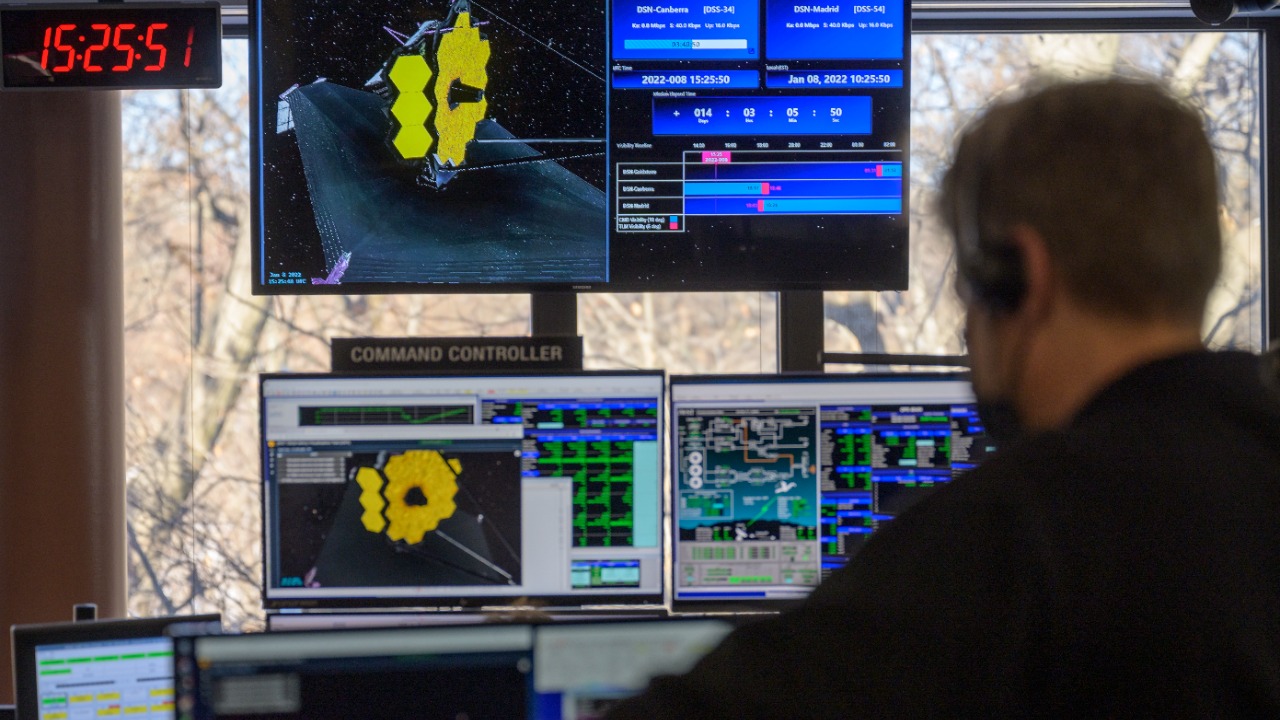
The James Webb Space Telescope has made a groundbreaking discovery, unearthing a mysterious ancient “Big Red Dot” in the Cosmic Dawn. This celestial object, identified as a voracious supermassive black hole named ‘BiRD’, lurks in the early universe. This revelation, announced in November 2025, challenges existing theories of black hole formation, suggesting that such massive entities existed much earlier than previously thought. This could potentially reshape our understanding of the universe’s first black holes, which are now considered “not so exotic anymore.”
Spotting the Big Red Dot
The James Webb Space Telescope, with its advanced infrared capabilities, was instrumental in detecting the “Big Red Dot”. Observing the Cosmic Dawn era, the telescope picked up on infrared signatures that revealed an unusually bright, red-shifted object. This object, now known as ‘BiRD’, was classified as a ravenous supermassive black hole due to its voracious feeding on surrounding gas and stars in the ancient universe.
Redshift measurements played a crucial role in determining the black hole’s extreme age, dating it back to a time shortly after the Big Bang. This positions ‘BiRD’ within the Cosmic Dawn period, a time when the first stars and galaxies were beginning to form, providing a unique glimpse into the early universe.
Characteristics of BiRD
‘BiRD‘ is not your average black hole. Its estimated mass is significantly larger than that of typical stellar black holes, emphasizing its supermassive nature. This anomaly raises intriguing questions about the early cosmic evolution and the formation of such massive objects. The “big red dot” appearance is attributed to the black hole’s intense accretion disk, which glows in red wavelengths, a phenomenon captured by the James Webb Space Telescope’s instruments.
The environment surrounding ‘BiRD’ is equally fascinating. The supermassive black hole influences nearby gas clouds and potentially even galaxy formation in the ancient universe, further highlighting its significant role during the Cosmic Dawn.
Challenging Early Black Hole Theories
The discovery of ‘BiRD’ has led to a paradigm shift in our understanding of the universe’s first black holes. The James Webb telescope is unraveling the truth about these primordial entities, with ‘BiRD’ serving as evidence that they formed more rapidly than previously thought. As researchers have noted, these black holes are “not so exotic anymore”, indicating a shift in perceptions of these celestial objects from rare to common events.
The existence of ‘BiRD’ also challenges theoretical models of black hole seeding from the first stars. The discrepancies suggest alternative formation mechanisms, such as direct collapse, which could explain the rapid formation of such massive black holes in the early universe.
Connections to Ancient Galaxies
The Webb telescope’s 2023 detection of super old, massive galaxies that shouldn’t exist provides an interesting link to ‘BiRD’. These galaxies appeared just hundreds of millions of years after the Big Bang, similar to ‘BiRD’s’ epoch in the Cosmic Dawn. This timeline overlap suggests that ‘BiRD’ may have co-evolved with these unexpectedly mature structures in the early universe.
It’s plausible that ‘BiRD’ resided at the center of one of these massive galaxies, accelerating their growth through mergers and accretion. This potential interaction between ‘BiRD’ and ancient galaxies offers a fascinating insight into the complex dynamics of the early universe.
Broader Cosmic ‘Red Monsters’
In August 2025, NASA spotted 3 ‘red monsters’, each equivalent to 100 billion Suns. These massive red objects, potentially akin to ‘BiRD’, are believed to foster cosmic life through star formation. These ‘red monsters’ are described as creating cosmic life, drawing parallels to ‘BiRD’s’ role in seeding galaxies during the Cosmic Dawn.
The scale of these ‘red monsters’ is truly awe-inspiring. Each one matches the luminosity of 100 billion Suns, underscoring the energetic output shared with the ‘big red dot’. This comparison further emphasizes the significant role these ancient celestial objects played in the early universe.
Implications for Universe Origins
The discovery of ‘BiRD’ and similar findings from the James Webb Space Telescope are revising timelines for supermassive black hole growth. This has significant implications for models of the universe’s first billion years. The unraveling of first black hole truths emphasizes that such objects were integral to the rapid assembly of the cosmic web.
These ancient black holes likely influenced the distribution of matter and the emergence of the first galaxies, playing a pivotal role in cosmic evolution. As we continue to uncover more about these celestial entities, we gain a deeper understanding of our universe’s origins and the intricate processes that shaped it.
More from MorningOverview